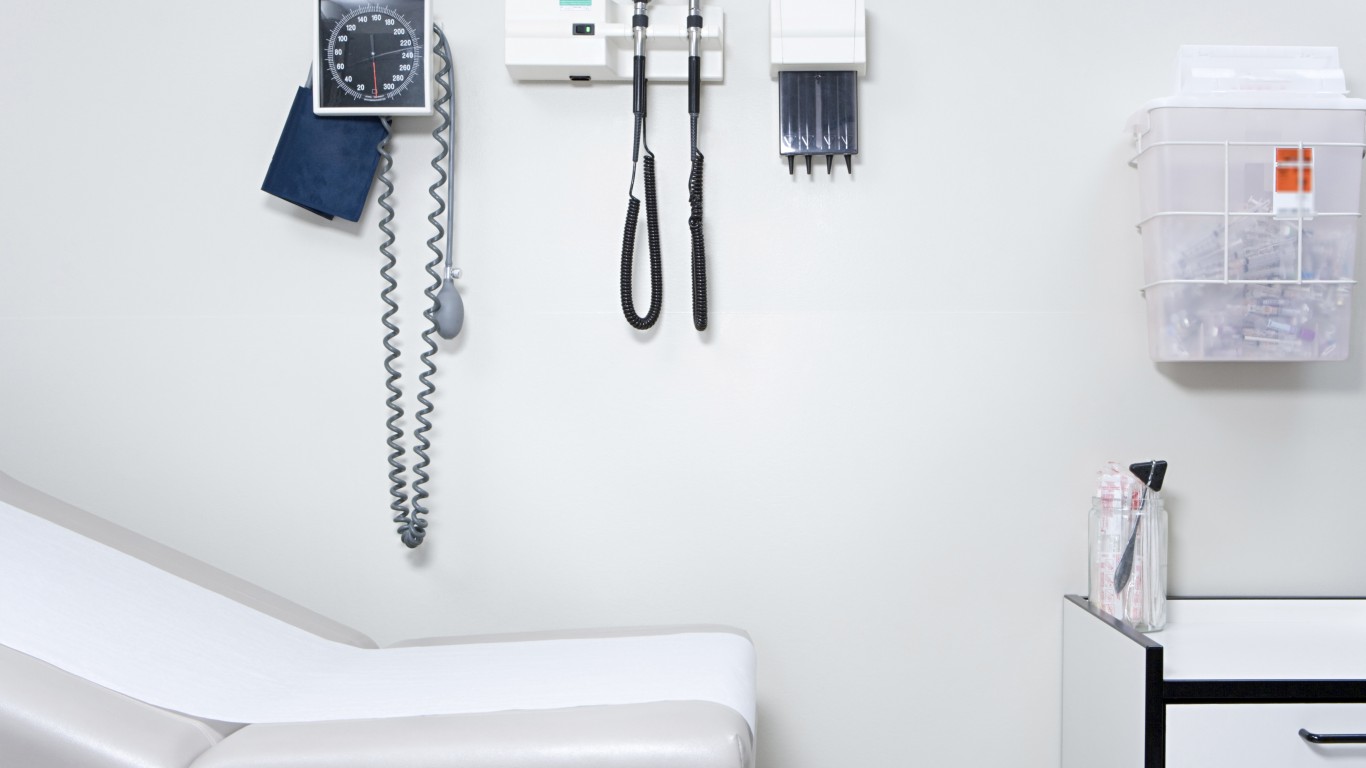Health and Healthcare
The State That Spends the Most on Health Care

Published:
Last Updated:

Though expensive, health care costs largely are covered by the government. In 2019, the federal government paid for 29.0% of all health-related spending in the United States. Slightly less (28.4%) came from households. State and local governments covered 16.1% of the total cost. In 2018, the latest year for which state and local data is available, state governments spent $885 billion on health care, or $2,696 per person. Due to different budget priorities and needs, local government health care spending varies considerably by state.
To determine the state that spends the most on health care, 24/7 Tempo reviewed the detailed health care expenditures by state governments provided by the U.S. Census Bureau’s 2018 Annual Survey of State and Local Finances. Per-capita health care spending ranges from less than $1,100 to more than $3,600.
States allocate between 17% and 39% of their total budgets to health care costs. The major categories of health spending at the state level include partial Medicaid coverage, state-run hospitals and university medical schools and, finally, other health expenses and programs addressing needs such as community wellness, substance abuse, health inspection and pollution control.
In every state, the largest portion of overall health care spending goes towards public welfare programs. These include Medicare and Medicaid, two government-funded health insurance programs that offer coverage to the elderly, the disabled and people with low incomes.
State spending on health care in 2018 consisted of three components:
Per capita spending was calculated using the total of each state’s expenditure in these areas, and 2019 annual estimates come from the Census Bureau’s 2019 American Community Survey (ACS). The shares of the population 65 and older, those living with a disability and those with health insurance also came from the ACS and are for 2019.
By these measures, the state that spends the most on health care is New York. Here are the details:
- State spending on health in 2018: $3,698 per capita
- Health spending as share of all state spending in 2018: 33.7% (sixth highest)
- Total state health budget: $71.9 billion
- Population 65 and older: 16.9% (25th lowest)
- Population with a disability: 11.6% (11th lowest)
- Adults without health insurance: 5.2% (seventh lowest)
Click here to see how much your state spends on your health.
If you’re like many Americans and keep your money ‘safe’ in a checking or savings account, think again. The average yield on a savings account is a paltry .4% today, and inflation is much higher. Checking accounts are even worse.
Every day you don’t move to a high-yield savings account that beats inflation, you lose more and more value.
But there is good news. To win qualified customers, some accounts are paying 9-10x this national average. That’s an incredible way to keep your money safe, and get paid at the same time. Our top pick for high yield savings accounts includes other one time cash bonuses, and is FDIC insured.
Click here to see how much more you could be earning on your savings today. It takes just a few minutes and your money could be working for you.
Thank you for reading! Have some feedback for us?
Contact the 24/7 Wall St. editorial team.